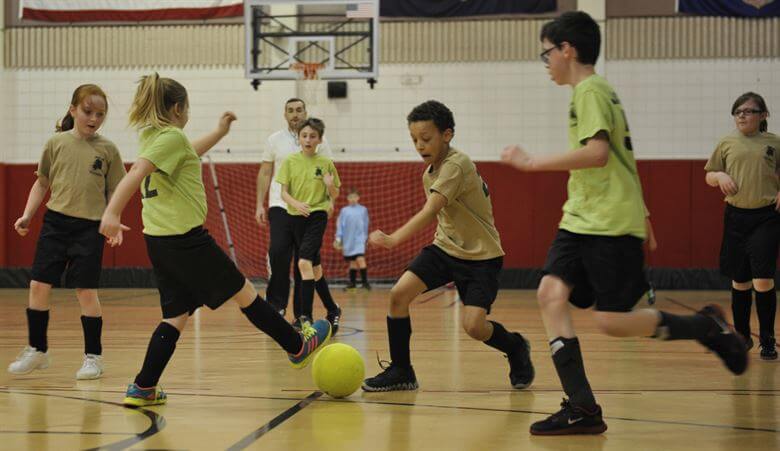
Leadership is a set of skills and practices that are available to physical education (PE) teachers. One of the leadership styles that I would like to introduce is “transformational leadership” because its leadership is highly related to fostering a positive environment, empowering students, and maximizing teaching. According to Bass (1990), four factors consist of transformational leadership: (a) idealized influence, (b) inspirational motivation, (c) intellectual stimulation, and (d) individual consideration. Each component includes meaningful values, benefits, and purposes for PE teachers. The focus of this article is to describe specific characteristics of transformational leadership and provide implications for PE teachers to incorporate and apply them in class.
 Idealized influence
Idealized influence
Idealized influence is about being a role model. Specifically, PE teachers should be skillful role models. Students need to be provided with a proper demonstration allowing them to improve performance and skills. Of course, it is impossible for PE teachers to master all kinds of physical activities or sports skills; however, PE teachers should keep developing skills, as well as acquiring new knowledge as much as possible. If PE teachers lack in some areas, they should seek training opportunities by attending professional development or conferences (e.g., SHAPE America/regional SHAPE conferences). PE teachers should be skilled so that they are able to demonstrate the techniques and skills as needed. Additionally, students are taught the importance of being physically active and life-long movers in PE (Corbin, 2002). Therefore, it would be beneficial for PE teachers to share their life experiences with students as role models. For example, PE teachers’ sharing experiences of taking part in any sports activities or playing sports can motivate students to increase their desire of being physically active (Kim et al., 2017). By demonstrating and sharing teachers’ personal experiences, students are more likely to accept the importance of regular physical activities. Transformational leadership requires PE teachers to lead students by doing, not simply by telling (Bass, 1990).

Inspirational motivation
Inspirational motivation takes place when PE teachers provide clear and specific missions and visions (Kim et al., 2017). In terms of mission statements, PE teachers should be able to inspire students to maintain a healthy lifestyle. Moreover, the aim is to develop the necessary motor skills to participate in various physical activities in an enjoyable manner. Through the missions and visions, PE teachers enable students to achieve the same passion and motivation that they themselves emulate. Below are some examples of possible and potential mission statements:
- PE programs offer a variety of skills necessary to perform a variety of physical activities and sports
- PE programs help students acquire knowledge and skills to stay physically fit
- PE programs help students realize the value of physical activity and contribute to a healthy lifestyle

Intellectual Stimulation
Intellectual stimulation involves employing various ideas to induce students’ curiosity and learning. In other words, PE teachers use intellectual stimulation to provide creative and innovative learning experiences for students. First, as technology evolves, it is now easy to use diverse technological tools such as Wii, X-Box, or various applications. These technologies typically do not require an extensive budget and they can create effective learning environments. For instance, an application, “Coaches’ Eyes” allows PE teachers to record, analyze, and evaluate students’ performances. It helps students see what they cannot see and catch during their performance and provide accurate movement analysis. Using “Coaches’Eyes” can keep students engaged and motivated. Second, employing modified materials, equipment, and rules may help PE teachers boost students’ learning. For example, in a tennis unit, modified rules (allowing two or three bounces, using narrowed sidelines, or lowering the net) and equipment (low-compression balls or different sizes of tennis balls) can facilitate the performance of students. PE teachers should continue to find and use innovative and new ideas according to lessons and students’ abilities.

Individualized Consideration
Individualized consideration takes place when PE teachers find and respond to specific students’ needs. In order to provide individualized consideration, PE teachers should be effective communicators. This entails multiple important aspects, such as building an intimate relationship, listening to what students need, and providing proper feedback. Building a relationship means finding value on a personal level. It is the ability to approach and embrace students while not sacrificing professional responsibilities. Furthermore, a major part of being an effective communicator is listening. By asking questions such as, “How was the class?” and “How did you feel about today’s class?” and “What would you suggest for today’s lesson?”, PE teachers can actively listen of the students. Another way to provide individualized consideration is to offer proper feedback. After finding students’ concerns or issues, PE teachers should express their thoughts and take action. Transformational leadership is highly interactive. PE teachers strive to proactively communicate with students and draw the best from them by showing authentic care and respect (Bass, 1990).
 Conclusion
Conclusion
Transformational leadership has been found to be positive and effective as it includes four domains: idealized influence, inspirational motivation, intellectual stimulation, and individualized consideration. The concept of transformational leadership provides various practical and viable ideas to enhance the quality of PE. Therefore, it is necessary for PE teachers to consider and display the characteristics of transformational leadership.
Reference
Bass, B. M. (1990). Bass & Stogdill’s Handbook of leadership; Theory, research, and managerial applications. (3rd ed.). New York: The Free Press.
Corbin, C. (2002). Physical activity for everyone: what every physical educator should know about promoting lifelong physical activity. Journal of Teaching Physical Education, 21, 128–144.
Kim, M., Hushman, G., Holzberg, L., & So, H. (2017). The effect of transformational leadership on middle school students’ intrinsic motivation and expectancy-value in physical education. European Journal of Educational Sciences ,4(2), 22-31.

please add me to your mail list